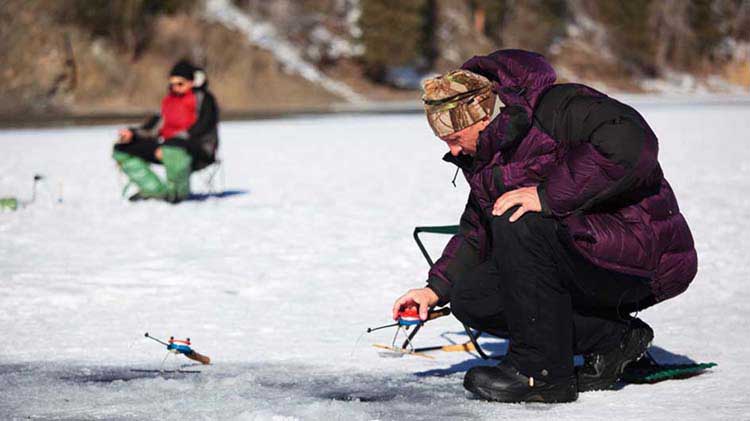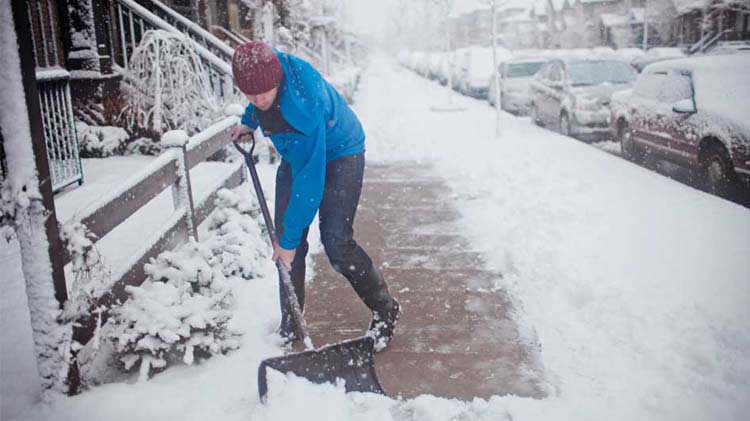Winter recreation: Ice safety
If you plan to go out on the ice for winter activities, keep these ice safety considerations in mind.
You should always take extreme caution when venturing onto ice because falling through can cause hypothermia and drowning. Follow these general ice safety tips to help protect you and your family this winter:
Tips to make your ice outing enjoyable
During the winter months, a frozen lake can be the center of many outdoor activities, including ice hockey, dog sledding and ice skating. While these winter sports can be fun, they can also be dangerous. In some cases, serious injury or death has occurred due to unsafe ice practices.
Safe ice thickness
Follow these guidelines to help determine ice thickness and safety.
- Ice thickness: Ice needs to be at least 4 inches thick for safety on foot.
- How to test: Use a chisel or auger to make a hole, and measure the thickness with a tape measure.
- How often to test: Test the ice every 150 feet, as ice rarely freezes uniformly, and never assume a winter's worth of ice is safe because new ice is stronger than old ice.
- Look for clear ice: Clear ice is twice as strong as snow-covered or white ice. When testing the latter, it should be twice as thick.
- Weight on ice: Ice 4 inches thick can withstand 200 pounds per square feet, whereas ice 5 inches thick can usually withstand 800 pounds.
On the ice
Don't forget these safety considerations:
- Dress appropriately. Wear shoes or boots with plenty of traction and layer up with water-resistant clothing.
- Use the buddy system. Never go onto the ice alone, and always stay 10 feet from your partner when moving on the ice. That way, if one person falls in, the other is able to help.
How to ice fish safely
It's not just about ice thickness, being safe on the ice requires patience and preparation. Here are some practical things you could do to have a safer outing:
- Bring a friend. Don't ice fish alone. Also, make sure friends and family know where you're fishing and when you plan to return home.
- Spread out. Do not drill too many holes in one place. The more holes, the less stable the ice surface.
- Don't ice fish near plants. Plants produce heat as they decay. So watch your step in marshy areas.
- Wear a life jacket. Life vests have excellent flotation properties in case you fall into the water.
- Wear appropriate footwear. Crampons (or creepers) fit on the bottom of your shoes to give you more traction on ice. Spray them with vegetable oil to prevent snow or ice from sticking.
- Bring a pair of ice picks or screwdrivers. Keep them in your jacket in case you fall into the water and have to pull yourself out. Make sure they have wooden handles so they won't sink.
- Pack a rope to go ice fishing. It's easier to pull someone out of the water with a rope than by the arms.
- Avoid snow-covered ice. Snow has insulating properties, which prevents cold air from keeping the ice at freezing temperatures.
- Refrain from alcohol usage. Alcohol slows your reflexes and can make you more vulnerable to hypothermia.
- Pack a first aid kit and matches. Keep these items in a dry and secure place so they will be usable in case of emergency.
- Keep away from shipping lanes. Tankers and barges disrupt the integrity of the ice, even if you're fishing miles away.
- Park your vehicle on dry land. Refrain from parking your car or truck on the ice. The added weight could cause the ice around you to break.
What are the dangers of ice fishing?
Ice fishing injuries and fatalities are usually the result of hypothermia (a condition that dramatically lowers the body's temperature, causing severe metabolic dysfunction) or vehicle-related accidents. Some of the other common dangers of ice fishing include:
- Not dressing properly to go ice fishing. Due to the risk of hypothermia, keeping your head, hands, and feet warm and dry is essential.
- Not packing adequate ice fishing equipment. Death from drowning can occur if you're not wearing a life jacket. Packing the right equipment, such as picks and rope, can help you beat the odds.
- Excessive alcohol consumption while ice fishing. Drinking alcohol can slow your reflexes and reaction time, which can be risky in the event of an emergency. Excessive drinking also increases your chances of getting hypothermia, because alcohol constricts blood vessels and lowers body temperature.
- Falling through thin ice. Ice doesn't freeze evenly on the surface of a lake or river, and thin patches can't always be detected by sight alone. Ice strength is affected by current, wind and other factors. Thin ice will not sustain the weight of a human, let alone a snowmobile, all-terrain vehicle (ATV) or truck. Check with your local emergency officials about safe ice thickness.
If you fall through
Know what to do in this worst-case scenario.
- Remember to bring safety tools. Before you head out on the ice, make sure you have ice picks to help you climb out of the water and a whistle to call for help.
- Don't panic. You'll lose energy fast, so make slow and intentional movements toward the place you fell in.
- Avoid standing up right away. Once you're out, travel away from the hole on your stomach or side keeping your body weight evenly distributed across the ice to help prevent further cracks.
Be sure to check out safety tips for outdoor activities and snowmobile tips for beginners for additional tips on how to stay safe while enjoying winter activities.




